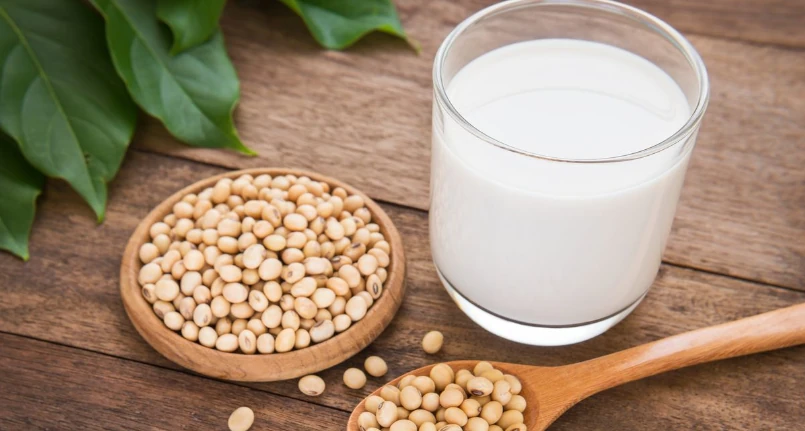Introduction
Rich in substances beneficial to the health of the organism, almonds however have contraindications if consumed in excessive doses, especially the bitter ones. Almond refers to the edible seed produced by the almond tree (botanical name Prunus dulcis ), a fruit tree with an average height of 10 m which belongs to the Rosaceae family. The almond tree produces oval and compressed fruits which, when fully ripe, give rise to an oblong stone (woody endocarp), inside which there are one or two sweet oilseeds , i.e. the almonds. .
It is known that almonds are considered allies of well-being for the treatment of pathologies and disorders related to the skin , hair , and the entire body, however excessive consumption can cause a far from beneficial impact on our body, causing inflammatory states , swelling , and even anaphylactic shock .
Benefits of almonds
Almonds are a rich food source of proteins , unsaturated fats, vitamins (especially the presence of vitamin E is relevant ) and phytonutrients. The content of omega 6 essential polyunsaturated fatty acids is also appreciable . The mineral profile is worthy of note, as they contain discrete quantities of: manganese , magnesium , calcium , copper , phosphorus and zinc . Almonds (especially with peel) contain excellent amounts of dietary fiber , useful for maintaining the balance of intestinal bacterial flora and the proper functioning of the colon . Among the possible benefits deriving from their consumption are listed: improvement of fat levels in the blood , sugar control and help in subjects suffering from type 2 diabetes and weight control . Contrary to what is commonly thought, in fact, almonds do not present contraindications for subjects suffering from metabolic pathologies; on the contrary, if consumed intelligently and without exceeding, they contribute to optimizing the parameters of lipemia.
Nutritional values for 100 g of almonds
| Power | 576 kcal | ||
| total carbohydrates | 21.69 g | ||
| Starch | 0.74g | ||
| Simple sugars | 3.89 g | ||
| Fats | 49.42g | ||
| Saturated | 3.73 g | ||
| Monounsaturated | 30.89 g | ||
| Polyunsaturated | 12.01g | ||
| Protein | 21.22g | ||
| fibers | 12.2g | ||
| Waterfall | 4.7g | ||
| Vitamins | |||
| Vitamin A equivalent | 1.0 μg | 0% | |
| Thiamine or B1 | 0.211 mg | 18% | |
| Riboflavin or B2 | 1.014 mg | 85% | |
| Niacin or PP or B3 | 3.385 mg | 23% | |
| Pantothenic acid or B5 | 0.469 mg | 9% | |
| Pyridoxine or B6 | 0.143 mg | 11% | |
| Folic acid | 50.0 μg | 13% | |
| Choline | 52.1 mg | 11% | |
| Ascorbic acid or C | 0.0 mg | 0% | |
| Vitamin D | 0.0 μg | 175% | |
| Alpha- tocopherol or E | 26.2 mg | 2% | |
| Vit. K | 0.0 μg | 0% | |
| Minerals | |||
| Soccer | 264.0 mg | 26% | |
| Iron | 3.72 mg | 29% | |
| Magnesium | 268.0 mg | 75% | |
| Manganese | 2.285 mg | 109% | |
| Phosphorus | 484.0 mg | 69% | |
| Potassium | 705.0 mg | 15% | |
| Sodium | 1.0 mg | 0% | |
| Zinc | 3.08 mg | 32% | |
Side effects of eating almonds
There are known health risks related to the consumption – often in excess – of almonds. They refer in particular to fungal contamination and the release of aflatoxins , highly hepatotoxic agents . Almonds as well as peanuts contain a fat also known as arachidonic acid , essential for some metabolic reactions, but also harmful if present in high doses, because it can stimulate the inflammatory process and adverse reactions. Among the common reactions, resulting from an excessive consumption of almonds, in fact, we find abdominal pain , dizziness , nausea, gastrointestinal problems or skin irritations. In case of previous inflammatory state, the consumption of almonds will worsen the symptoms. Especially if the fruits are toasted, the risk is greater. In these cases, in fact, in addition to losing mineral substances and a large part of the vitamin intake destroyed by the heat, a harmful substance, acrylamide , which is potentially carcinogenic , could develop .
Foods to eat with almonds to reduce inflammation
When consuming almonds it is necessary not to exaggerate both with the quantity ingested and with the frequency of intake. Among the raw ones, peeled or not, it is always better to prefer those with peel because they are richer in nutrients and fibres. Between natural and toasted almonds, the former are definitely preferable. The combination with foods such as vegetables such as cucumber , celery , fennel , but also kiwi or pineapple , counteracts the inflammatory potential of this dried fruit .
Almond intolerance: symptoms
What kind of inflammation triggers the excessive consumption of almonds? An alteration is produced which is capable of damaging the cell membrane , abruptly interfering with their correct functioning. When the inflammatory process occurs , cells and organs suffer, as well as their activity. The typical symptoms of inflammation and intolerance reaction manifests itself with typical and common symptoms, such as: difficulty in digestion , abdominal swelling , acidity, nausea, reflux and heartburn .
Contraindications of Bitter Almond
The adverse reactions mainly concern bitter almonds, i.e. the seed produced by Prunus amygdalus , a botanical species used above all for ornamental purposes. The bitter taste of these seeds is due to the quantity of a substance called amygdalin , a cyanogenic glycoside (i.e. capable of secreting cyanide ) which, if ingested in large quantities, can be decidedly harmful to health. The bitterer the almond, the greater its poisonous power. Amygdalin toxicity can be reversed by cooking.




